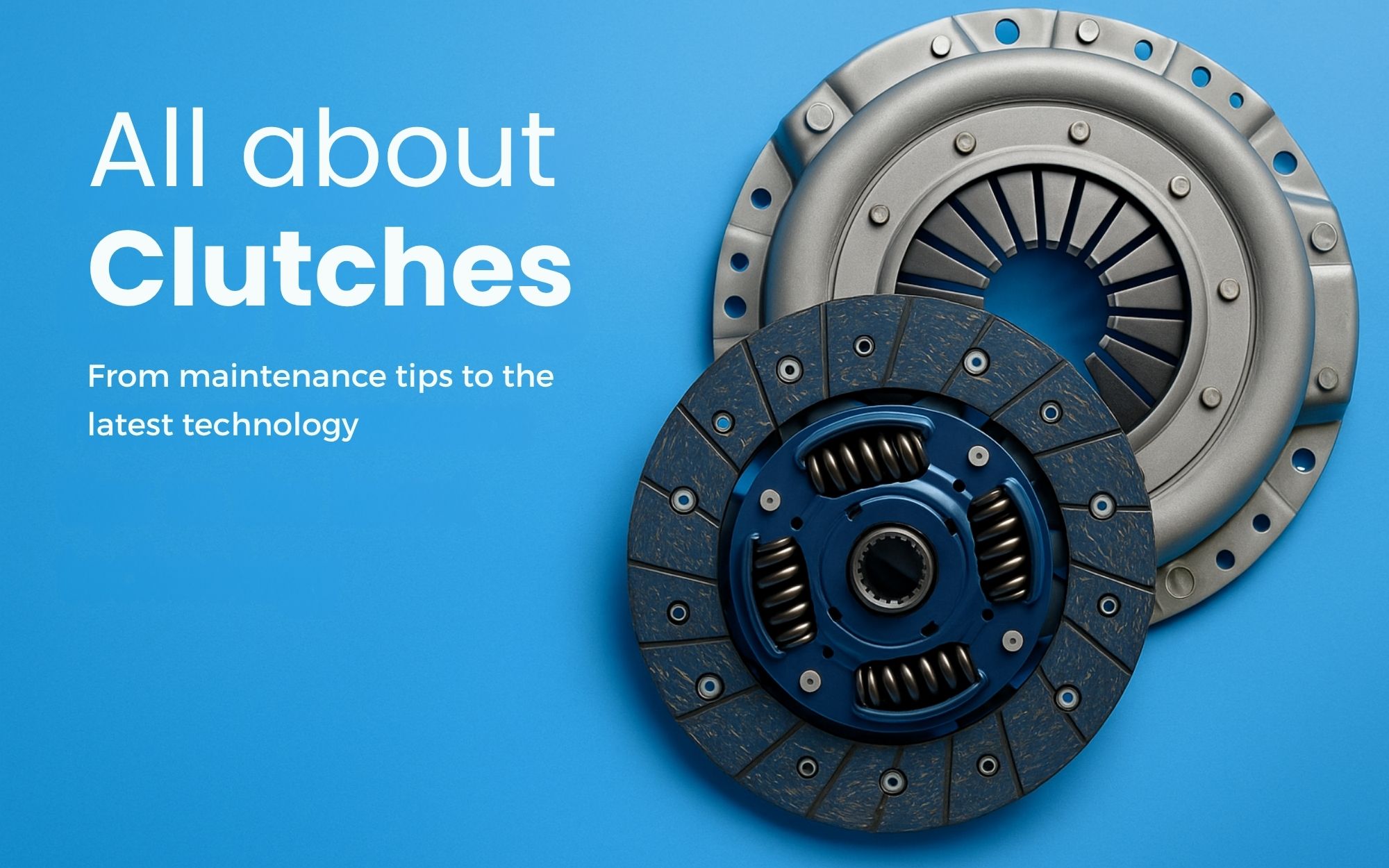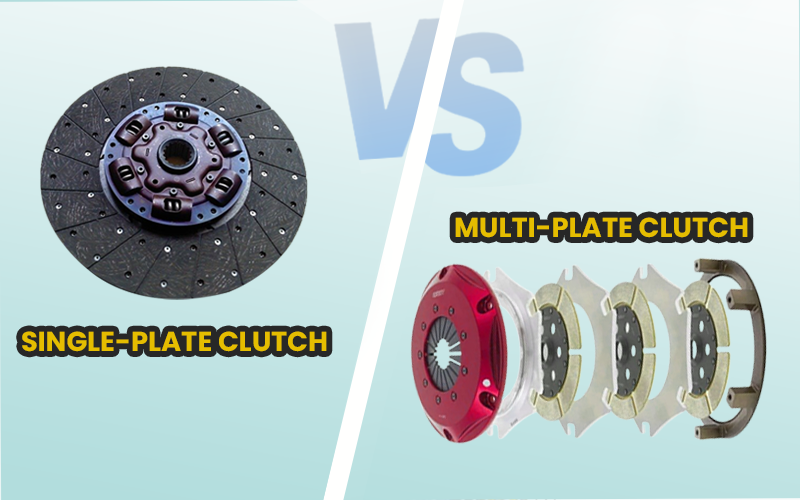

Introduction:
The joy of driving comes from knowing your vehicle is prepared for anything, with every part playing its role perfectly. Before you turn the key, it's important to make sure every part of your vehicle is ready to deliver the performance you need. At Autozilla we understand that Every part of the vehicle plays a crucial role in delivering the performance you expect and deserve but one component that often doesn’t get the attention it deserves is the clutch. This small yet powerful part is integral to your vehicle’s transmission system, directly affecting how smoothly and efficiently your car drives. Clutch failure not only leads to costly repair but also can keep your life and other drivers’ life in danger. In this blog, we’ll explore why investing in a high-quality clutch is essential for optimal vehicle performance.
The Backbone of Your Transmission: Why Your Vehicle Deserves a High-Quality Clutch?
Your car's clutch isn't just a simple link between the engine and the gearbox, it's an advanced mechanism that carefully controls the power shift. A high-quality clutch ensures that this transfer is smooth, reducing wear and tear on your vehicle and enhancing overall driving comfort. Putting money into a high-quality clutch means better fuel efficiency, improved acceleration, and a longer lifespan for your vehicle. Picture yourself slowly moving through packed city traffic, constantly shifting between gears. In such conditions, a high-quality clutch provides smooth and consistent engagement, reducing the strain on your transmission and making each gear change feel effortless. With a low-quality clutch, you could encounter rough shifts or clutch slipping, which could cause more damage. An excellent clutch guarantees that even in stop3-and-go traffic, your driving is still comfortable and stress-free.
Know When to Replace Your Clutch: A Comprehensive Guide.
Even the best quality clutches will eventually wear out and require replacement. Knowing the signs of a failing clutch can save you from more costly repairs down the line and helps you by not keeping life in danger. A failing clutch doesn't always announce itself loudly; instead, it can give off hints that are easy to miss if you're not paying attention. Here are key indicators that your clutch may need to be replaced:
Slipping: If you find that your engine is revving up but you're not going any faster, it could be a sign that your clutch might be slipping. This usually happens because the clutch's friction material is worn out and can no longer grip the flywheel effectively.
Difficulty Shifting Gears: Struggling to shift gears smoothly, or hearing grinding noises when you do, can indicate that your clutch is not disengaging fully, often a sign of wear or damage.
Unusual Noises: A clutch that makes unusual noise, particularly when you press the pedal, could be a sign of a damaged release bearing or other internal issues. Pay attention to any sounds that are out of the ordinary.
Burning Smell: A burning smell, especially after heavy clutch use (like in stop-and-go traffic), can indicate that the clutch is overheating due to excessive friction, often a sign of wear.
Soft or Spongy Clutch Pedal: If the clutch pedal seems softer or more spongy than normal, it might be a sign of air in the hydraulic system or a problem with either the clutch master or slave cylinder.
Vibrations or Chattering: Experiencing vibrations or a chattering noise when you press the clutch, this could indicate issues like a damaged flywheel or a worn clutch disc.
Clutch Pedal Sticking: If the clutch pedal stays on the floor or returns very slowly after being pressed, there might be an issue with the clutch linkage, cable, or the hydraulic system.

Step-by-Step Guide to Replacing Your Clutch
Replacing a clutch might seem challenging, but with the right tools and clear instructions, it's definitely something you can handle. As with all services, Safety is key. Here’s a simplified guide to help you through it:
Tools required: Socket set, torque wrench, jack stands, clutch alignment tool, and a new clutch kit.
Raise the Car: Use a jack to elevate the vehicle and stabilize it with jack stands.
Get to the Transmission: Remove components like the driveshaft and exhaust system to access the transmission
Disconnect the Transmission: Loosen the transmission from the engine and slowly lower it with a transmission jack.
Take Out the Old Clutch: Loosen the pressure plate and take out the old clutch disc. Look at the flywheel for damage and replace it if needed.
Install the New Clutch: Use a clutch alignment tool to position the new clutch disc and pressure plate correctly. Torque the bolts to the manufacturer's specifications.
Put the Transmission Back: Lift the transmission and bolt it back into the engine.
Reinstall Components: Reattach all previously removed components, including the driveshaft and exhaust system.
Test Drive & Check for Proper Operation: Once everything is reassembled, take your vehicle for a test drive to ensure the clutch is functioning smoothly and all gears are engaging properly.
Single-Plate vs. Multi-Plate Clutches: Which is Right for You?
Clutches come in different types, each suited to specific driving needs. The most common are single-plate and multi-plate clutches.

Single-Plate Clutches: These are the most common and are typically found in standard passenger vehicles. They are reliable, easy to maintain, and ideal for everyday driving.
Multi-Plate Clutches: These are used in high-performance and racing vehicles where more power needs to be transmitted. They offer better heat dissipation and can handle more torque, making them perfect for high stress driving conditions.
Which Should You Choose? If you drive a standard vehicle and need reliability for daily commuting, a single plate clutch will serve you well. However, if you’re driving a high-performance vehicle or enjoy spirited driving, a multi-plate clutch might be the better choice.
Common Clutch Problems and How to Troubleshoot Them
Same as all other mechanical components in the car, even clutches will encounter problems. Some of the common issues that occur for the clutch and their troubleshooting tips are:
Clutch Drag: This happens when the clutch doesn't completely release. It's usually a result of a poorly set clutch pedal or damaged parts. Verify that the clutch pedal is set correctly and examine the clutch for any signs of damage.
Troubleshooting tips:
Pedal Adjustment: Ensure the clutch pedal is correctly adjusted.
Hydraulic/Cable Check: Inspect the clutch cable or hydraulic system for issues.
Component Wear: Check for worn clutch parts and replace if needed.
Noise: Strange sounds when operating the clutch might point to problems like a damaged release bearing or a worn clutch disc. It's important to examine these parts closely and consider replacing them if needed.
Troubleshooting tips:
Release Bearing: Replace if you hear grinding or squealing when pressing the clutch.
Pilot Bearing: If whining noise is present, inspect and replace the pilot bearing.
Clutch Disc: Examine for wear or damage and replace as necessary.
Vibration: If your clutch vibrates when engaged, it could be due to misalignment or damaged components. Ensure that all parts are correctly installed and in good condition.
Troubleshooting tips:
Alignment: Ensure clutch components are properly aligned during installation.
Flywheel: Inspect for warping or damage and resurface or replace if needed.
Clutch Disc: Replace if the disc is worn or unbalanced.
The Future of Clutch Technology:
As the automotive industry evolves, clutch technology is keeping pace with advancements that are driving the future of mobility. Clutches are critical components in both traditional and emerging vehicle technologies, and their development is shaped by the broader trends in electrification, sustainability, and smart technology. In this blog, we explore the key innovations that are redefining clutch systems and their role in the vehicles of tomorrow.
Electrification and Hybrid Integration
Clutches are being redesigned to work seamlessly with electric and hybrid powertrains, ensuring smooth transitions between different energy sources. This is essential for optimizing performance and efficiency in the next generation of vehicles.
Smart Clutch Systems
The integration of sensors and electronic controls in clutches is leading to smarter, more responsive systems. These clutches can adapt to driving conditions and driver behavior, reducing wear and improving overall performance.
Advanced Materials and Manufacturing
The use of lightweight materials like carbon composites is making clutches more durable and efficient. Innovations in manufacturing, including 3D printing, are enabling more complex and effective clutch designs.
Sustainability
Eco-friendly clutches are being developed to reduce environmental impact. These clutches use recyclable materials and are designed for longer life, contributing to lower emissions and better fuel efficiency.
Performance Enhancements
For high-performance vehicles, new clutch technologies are delivering faster, more precise engagement. These advancements are critical for handling higher power outputs while maintaining control and responsiveness.
Integration with Automated Driving
As autonomous driving technologies advance, clutches are being integrated with systems like adaptive cruise control and lane-keeping assist, ensuring smooth operation without human intervention.
Conclusion
Your vehicle’s clutch is a critical component that directly affects its performance and longevity. By understanding the importance of a high-quality clutch and knowing how to maintain it, you can ensure that your vehicle continues to run smoothly for years to come. At Autozilla, we are committed to providing you with the best Clutches and automotive parts on the market. Explore our range of clutches and other premium products to find the perfect fit for your vehicle. With Autozilla, you can drive with confidence, knowing that you’re using the best parts available.